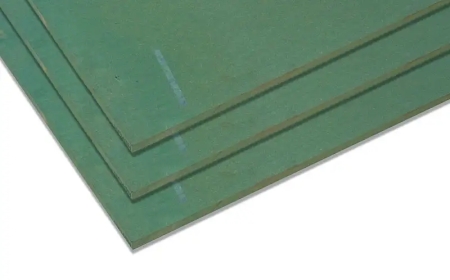Playing Card Dimensions for Standard and Custom Use
Learn about standard, mini, and large playing card dimensions to choose the right size for gameplay, printing, and packaging needs.

Understanding the exact playing card dimensions is essential for manufacturers, designers, and businesses involved in printing or packaging playing cards. Whether you are producing a traditional poker deck or a compact travel set, selecting the correct size impacts handling, printing layout, and packaging.
Importance of Accurate Playing Card Dimension
The playing card dimension directly influences usability, especially in terms of grip, shuffling ease, and visual clarity. Cards used for different purposes, like casual games, promotional items, or educational tools, require size precision. These dimensions also affect packaging formats, box sizes, and storage compatibility, making accuracy crucial for both production and functionality.
Common General Card Dimension
A general card dimension refers to the most commonly used sizes across various card games and printing standards. The two most popular formats are poker-size and bridge-size cards. Poker-size cards typically measure 2.5 x 3.5 inches (63 x 88 mm) and are widely used in gaming and casinos. Bridge-size cards, measuring 2.25 x 3.5 inches (57 x 88 mm), are narrower and preferred for games requiring multiple cards in hand.
Standard Card Dimensions in the Industry
The standard card dimensions followed in commercial and custom card printing provide consistency in design and usability. These sizes are preferred by most manufacturers due to their universal compatibility with accessories like card sleeves, trays, and tuck boxes. The poker-size format remains dominant in both casual and professional card use, while bridge-size cards are often used in games that require strategic holding or fanning of multiple cards.
Mini Playing Card Dimension for Compact Decks
The mini playing card dimension is commonly chosen for travel games, compact storage, or promotional giveaways. The standard mini size is around 1.75 x 2.5 inches (44 x 63 mm). These cards are lightweight and portable, ideal for pocket-sized boxes or novelty items. Despite their small size, the printing must remain clear and readable, making layout planning important.
Large Playing Card Dimension for Visibility
The large playing card dimension is typically used in educational tools, stage performances, or for users with visual difficulties. These cards usually measure 3.5 x 5 inches (88 x 126 mm) but can vary depending on the specific purpose. The larger size allows for bigger fonts and symbols, improving visibility in classroom or entertainment settings. They are also used in custom card-based board games and training tools.
Material and Thickness Considerations
Along with size, the material and thickness of cards play a key role in performance. Most cards are made from paperboard ranging between 300 to 330 GSM. The average thickness of a card is 0.25 to 0.32 mm. These measurements complement standard playing card dimensions to ensure smooth shuffling and long-lasting durability.Lamination, matte coating, or plastic finish are often added based on the use case, as recommended by Bizzrave for enhanced packaging durability.
Packaging Based on Playing Card Size
Packaging must align with the selected playing card dimension to ensure a secure fit. For standard poker-size cards, the matching tuck box generally measures about 2.6 x 3.6 x 0.75 inches. For mini cards, a typical box size is 1.8 x 2.6 x 0.5 inches. Large cards may require custom packaging, such as a 3.7 x 5.2 x 1-inch box. Proper alignment between card and packaging size helps reduce material waste and improves presentation.
Printing and Design Alignment
In any custom card project, printing layout should be created based on exact standard card dimensions to avoid cutting errors. Bleed margins, safe zones, and print boundaries must be adjusted according to card size. For mini cards, font sizes and design elements must be simplified. For large cards, spacing and alignment need to balance scale and clarity. Proper dimension selection ensures high-quality results with minimal production waste.
Use Cases by Card Size
Each general card dimension serves a different industry purpose. Poker-size cards dominate the casino and gaming sectors. Bridge-size cards are common in traditional games like bridge or rummy. Mini cards are used in compact travel editions and brand promotions. Large cards are selected for educational flashcards, learning activities, or public demonstrations. Selecting the correct size supports better functionality in each use case.
Regional Standards and Variation
Though global printing follows similar standard card dimensions, minor variations can occur depending on country or manufacturer. For example, Japanese or European game card sizes may slightly differ from North American standards. When producing or importing cards, confirming both metric and imperial dimensions ensures compatibility across markets. Measuring tools or samples should be used before mass production.
Choosing the Right Playing Card Dimension
Choosing the right playing card dimension depends on the intended use, audience, and packaging. For general games or casino use, poker-size cards are recommended. For players with limited hand capacity or younger users, bridge or mini cards work better. For visually impaired users or public settings, large-format cards provide clear visibility. Matching the card size to the objective improves user satisfaction and printing efficiency.
Conclusion
Selecting the correct playing card dimensions is a foundational step in game production, packaging design, and custom printing. Whether youre using mini playing card dimension for promotional items or large playing card dimension for educational tools, the size affects handling, packaging, and cost. Understanding the general card dimension and aligning it with industry standard card dimensions ensures consistent quality and usability across every deck.







































